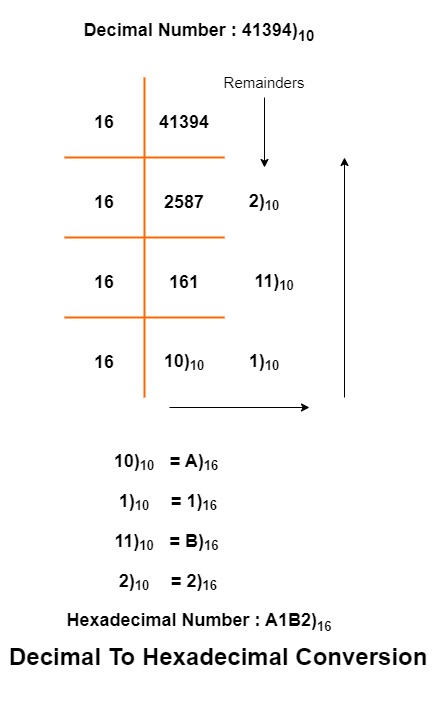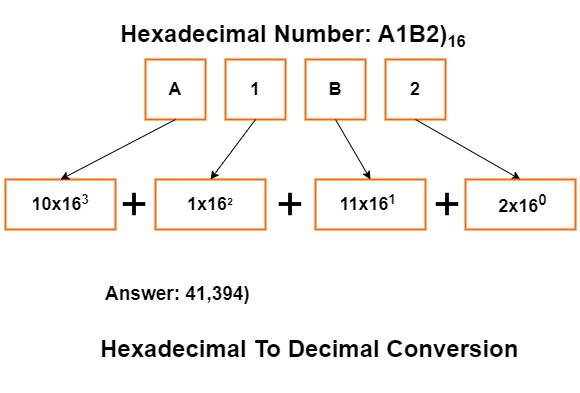How to use:
- Hexadecimal to decimal
- Enter any hexadecimal number you want to convert.
- Click the “Convert to hexadecimal” button, and instantly, you’ll receive the decimal representation.
- Decimal to hexadecimal:
- Enter the binary number you wish to convert.
- Hit “Convert to decimal,” and just as quickly, you’ll get the hexadecimal equivalent.
Hexadecimal to Decimal and Decimal to Hexadecimal Converter
What are decimal and binary number systems?
Hexadecimal Number System (Base 16):
The hexadecimal or base 16 number system contains distinct 16 single digits from 0 to 9 and A-F (A-F). It’s based on powers of 16; each position represents a different multiple of 16. Hexadecimal is often used in computing for a concise representation of binary-coded values. They are also used to represent colours in HTML and CSS. They are most commonly used in computing because of their compact nature and because they can easily be converted from binary number systems.
Decimal System (Base 10):
The decimal or base 10 number system consists of 10 single digits from 0 to 9. It is the most commonly used number system in our daily lives, like counting, money, and measurements. It’s based on powers of 10, and each position represents a different multiple of 10.

Conversion Between Decimal and Hexadecimal Number Systems:
Conversion Process:
- Start with the decimal number: let’s begin with the decimal number you want to convert.
- Divided by 16: Divide the decimal number by 16 and note the remainder.
- Repeat: Continue dividing the quotient by 16 until the quotient is 0, recording remainders each time.
- Note the results: The hexadecimal equivalent is the sequence of remainders read in reverse order.
For example, to convert the decimal number 41394 to hexadecimal, follow these steps:
- 41394 ÷ 16 = 2587, remainder 2)16
- 2587 ÷ 16 = 161, remainder 11)16
- 161 ÷ 16 = 10, remainder 1)16

Conversion Between Hexadecimal and Decimal Number Systems:
- Start from the rightmost digit (2 in this example), assigning it a positional value based on powers of 16 (160 for the rightmost digit).
- Assign each digit a positional value by increasing the exponent by 1 for each digit to the left.
- Multiply each digit by its positional value and sum the results to obtain the decimal equivalent.
- Add up all the assigned values to get the decimal equivalent.
For example, to convert the hexadecimal number A1B2 to decimal, follow these steps:
- Starting from the rightmost digit , we have:
- 2 * 16^0 = 2
- B * 16^1 = 176
- 1 * 16^2 = 256
- A * 16^3 = 40960
- Adding these values together: 2 + 176 + 256 + 40960 = 41394)10

Closing Thoughts:
Understanding hexadecimal is crucial for professionals in computer science, programming, networking, and various technical fields. And it is a powerful tool, especially if you’re delving into the realms of programming and technology.
